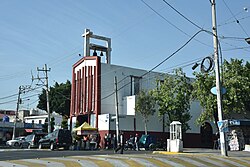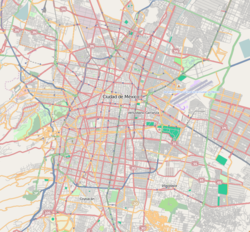History and design
The neighborhood was built on the Llanos de Balbuena, land previously owned by the Braniff family, a bourgeois family living in the country (Alberto Braniff, the first aviator of Latin America, was a member of it). [1] In 1908, the government of the country acquired 72 ha (180 acres) of land. The government considered creating a cemetery in the area, but since it was located far from the city center, the idea was discarded. After the end of the Mexican Revolution, around 1924, a prison was considered for construction. Instead, employees of the Secretariat of the Interior bought the land (then known as Cuatro Árboles) to build a neighborhood exclusively for civil servants. [2] On 24 October 1924, president Álvaro Obregón authorized the sale but regretted that despite its size, the site was not large enough to accommodate all the employees. Construction began on 8 February 1925 and eight days later the neighborhood was officially founded. [2]
Street names reference the cabinet of Mexico and other government dependencies. These include names such as Hacienda (Secretariat of Finance and Public Credit), Contraloría (Secretariat of Civil Service), or Trabajo (Secretariat of Labor and Social Welfare). [3] The radio-centric shape of the neighborhood, which resembles the design of a spider's web, is similar to that of Palmanova, a commune in Udine, Italy, or Place Charles de Gaulle, a road junction in Paris, France. By 1946, electricity was added to the area, drinking water pipes were installed in 1947, and by mid-century, the streets were paved. [2]
This page is based on this
Wikipedia article Text is available under the
CC BY-SA 4.0 license; additional terms may apply.
Images, videos and audio are available under their respective licenses.



